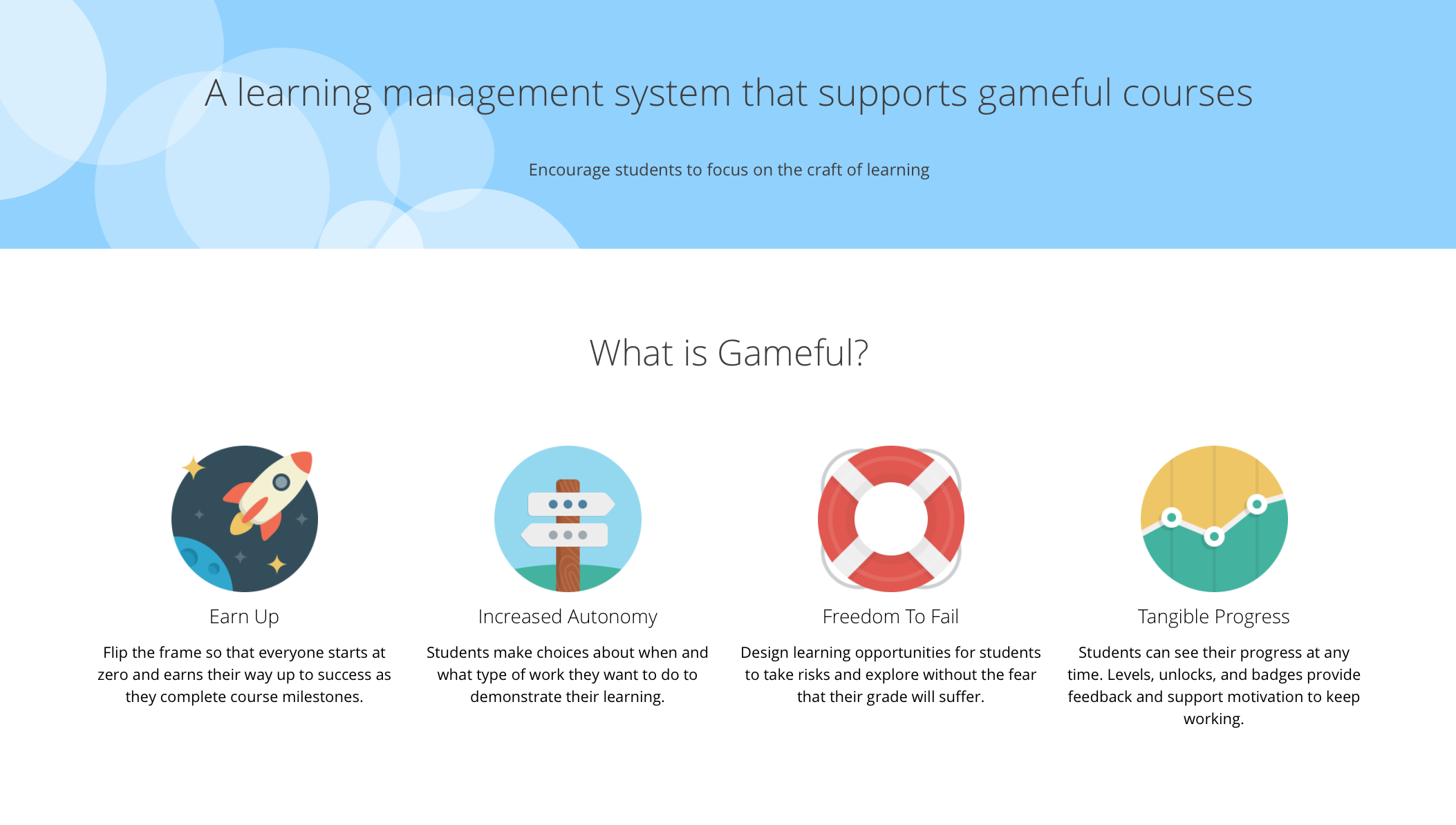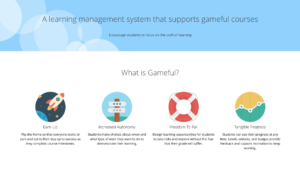
Technology for a University of Michigan learning approach that employs video game-style strategy made its way to the market this week.
The gameful instruction tool known as GradeCraft is now available to K-12 schools and universities, and a key university that promotes the use of technology in the classroom has signed on.
“With the ability to access and leverage GradeCraft, instructors around the world are now able to join a growing global community of educators committed to increasing student learning,” said James DeVaney, associate vice provost for academic innovation. “This is a perfect example of what’s possible when a research university like U-M supports a culture of innovation in learning, and a talented group of faculty, staff and students invests significant effort and creativity into solving a complex problem.”
 One of the first universities to purchase a site license is University of Arizona, a national leader in using digital technology in the classroom.
One of the first universities to purchase a site license is University of Arizona, a national leader in using digital technology in the classroom.
“We are excited to partner with Gradecraft and the University of Michigan. It is fantastic to find an educational technology that is built from the ground up with faculty leadership and based upon cutting-edge scholarship,” said Vincent Del Casino Jr., UA vice president of academic initiatives and student success. “The University of Arizona looks forward to deepening our partnership over time as we push toward a more comprehensive vision of gameful learning on our campus.”
Much like the video games students grew up playing, gameful instruction encourages them to take risks as they make choices about how to progress through a course. Students choose assignments they find challenging, and the unique software not only guides them through those choices but also helps them know what to do to succeed.
GradeCraft was co-developed in 2012 by Barry Fishman, professor at the U-M schools of Information and Education, and Caitlin Holman, doctoral candidate in the U-M School of Information and lead software developer at the Digital Innovation Greenhouse within the Office of Academic Innovation.
After successful implementation in his courses, Fishman shared the approach with colleagues across the university. Earlier this year, GradeCraft became available to all U-M faculty and staff through its Canvas course management system.
To date, 56 courses have employed some aspects of gameful learning, serving more than 10,000 students. This includes a series of massive open online courses (MOOCs).
“We believe gameful is a great way to reconnect students to learning and we’re excited to bring it to a larger audience,” Fishman said.
He and Holman have been working on developing the web application to support scaling the technology for use by others.
Prior to the public release, the team invited instructors from K-12 and higher education institutions across the world to develop courses and programs using the beta version of the application.
“This launch is coming after five years of work that started with an idea I had for how to use technology to support gameful courses,” Holman said. “Everyone starts at zero and then they build toward mastery of the course material.
“We get questions about how rigorous a course is given how many students earn high grades, but we consistently hear instructors describe their students doing creative and high quality work. When you design these environments properly you can create an incredible learning experience for students.”
Their work was supported by funding from the U-M Learning Analytics Task Force and a $1.88 million grant from university’s Third Century Initiative, the latter a $25 million fund created in advance of the university’s Bicentennial—which kicks off in full this year—to support faculty in the creation of courses and programs that transform learning for U-M’s next century.
GradeCraft was embraced by the Office of Academic Innovation and added to the portfolio of the Digital Innovation Greenhouse, where its developers could harness existing resources around software development, infrastructure expertise and user experience design.
“We created the Digital Innovation Greenhouse for just this purpose: to help translate digital education innovations like GradeCraft to scale. We’re thrilled to see it begin its expansion beyond campus, and look forward seeing gameful learning spread across higher education in the coming years,” said Tim McKay, professor of physics, astronomy and education, and director of the Digital Innovation Greenhouse.
The Transforming Learning for a Third Century grant funded the Gameful Assessment in Michigan Education (GAME) project in summer 2015, enabling the creation of a Gameful Learning Community of Practice. This resulted in formation of a Gameful Learning Lab with goals to convene educators from U-M and other institutions to collaboratively design gameful learning environments, and conduct a research-based approach to the development of tools around this theory of learning.
“The Gameful Learning Lab is committed to helping instructors at Michigan and beyond transform their courses to support students,” said Rachel Niemer, director of the Gameful Learning Lab.
Holman said some might think gameful learning is only for faculty who want to use technology extensively, but at U-M there are high- and low-tech uses.
For example, one Literature, Science, and the Arts faculty member uses a high-tech approach to teaching multiple sections of a course at the same time. Essentially being in the same place at the same time allows him to offer smaller course sections, which promotes better engagement and camaraderie among students.
A low-tech approach can be found in the College of Engineering, Holman said, where single technical communications course is paired with numerous departmental courses to give students a writing component in core engineering curriculum.


